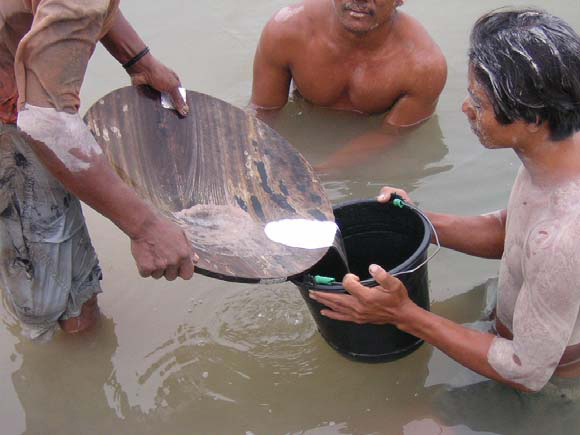Almost six years after signing on to the Minamata Convention on Mercury in October 2013, deliberations at a policy forum held to mark mining week earlier this week have described the current status of mercury use in the recovery of gold here as a “free-for-all” that “falls some way short of the robust commitment to eliminate mercury within a realistic time-frame.”
The assertion, made in a media release last Friday following a forum held to mark the start of Mining Week, points to the likelihood that the country’s mining sector could be hard-pressed to meet the deadline for the eradication of mercury use in gold recovery to which it committed itself under the Minamata Convention.
The Minamata Convention is a multilateral environmental agreement that addresses specific human activities which are contributing to widespread mercury pollution. Implementation of this agreement will help reduce global mercury pollution over the coming decades. The Convention is named after the Japanese city of Minamata, which experienced a catastrophic incidence of mercury poisoning, first discovered in 1956, after industrial wastewater from a chemical factory was discharged into the Minamata Bay, poisoning fish and shellfish, and resulting in what has since become known as Minamata disease (a neurological syndrome caused by severe mercury poisoning) as well as casualties among the inhabitants who consumed the infected seafood.
While the launch last weekend of Mining Week saw another official commitment to make it tougher for mercury to be acquired for use in gold mining, the authorities appear to have arrived at a pragmatic position that the ease with which the substance can be acquired renders that commitment a challenge to the capabilities at the disposal of the authorities.
And while the release said that the launch of Mining Week on Friday at the Umana Yana by the Guyana Geology & Mines Commission (GGMC) “provided a re-assuring display of their technical capacity to combat wanton destruction of forests and rivers” and for the young Guyanese professionals in the sector “to account for every tree in the forests and every dredge on the rivers,” that boast continues to be at variance with the mercury-related abuse of the country’s rivers and the destruction of forests linked to gold-mining pursuits.
Sources within the mining industry and residents of affected areas, meanwhile, continue to assert that much of the environmental damage is driven by corruption-related rackets that continue to supersede the laws that seek to contain illegal practices.
If the authorities appear to be in no doubt that the sector is moving in the direction of what the Mining Week statement describes as “good science,” it asserts that “our pace is too leisurely, ambivalent and insufficiently purposeful.” In terms of addressing what it calls “the climate crisis,” it declares that “time is of the essence,” adding that “science, however sophisticated, is not a substitute for good policy.” A measure of the concern that law enforcement measures are likely being ‘trumped’ by corrupt practices may well be reflected in the fact that according to the media release, both the Ministry of Natural Resources and the GGMC have conceded their inability “to take action” because they could find no evidence of a complaint made by the South Rupununi District Council that two dredges sited on the Kuyuwini river recently were “breaking any laws.”
While the authorities themselves are less than equivocal regarding the ‘innocence’ of the dredges in the Kuyuwini River, cynics in the industry are inclined to dismiss such pronouncements as part of what they say has been a long-entrenched posture of simply letting things slide.
Meanwhile, the post-symposium release which appears to derive from fairly deep introspective reflections, criticised as “short-sighted,” what it says is the country’s “lack of firm action to protect fresh water resources” which it says is “the most valuable long-term natural resource Guyana possesses.” It points out that while the Minamata Convention commits Guyana to the elimination of mercury use in mining by 2027, “the Kuyuwini and all of Guyana’s great rivers will be irrevocably poisoned by mercury. All the great rivers of Guyana, the Puruni, the Mazaruni, the Cuyuni, the Potaro, Essequibo and Demerara are being sacrificed to extraction. The cost to these arteries of Guyana has to be calculated in terms not only of quality of human life but also extinction of wildlife, fish stocks and bio-diversity. The cost is incalculable,” the statement said.





